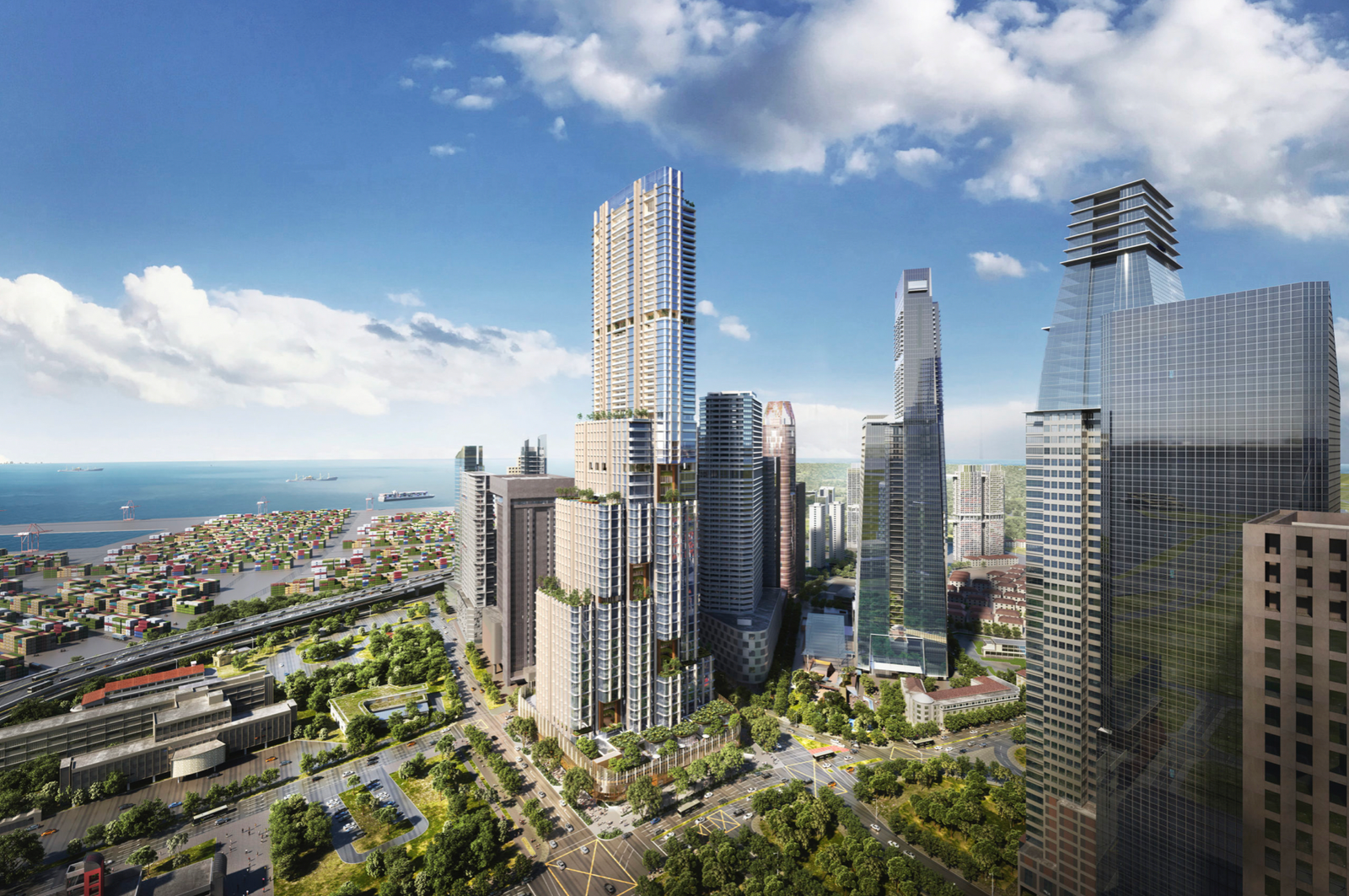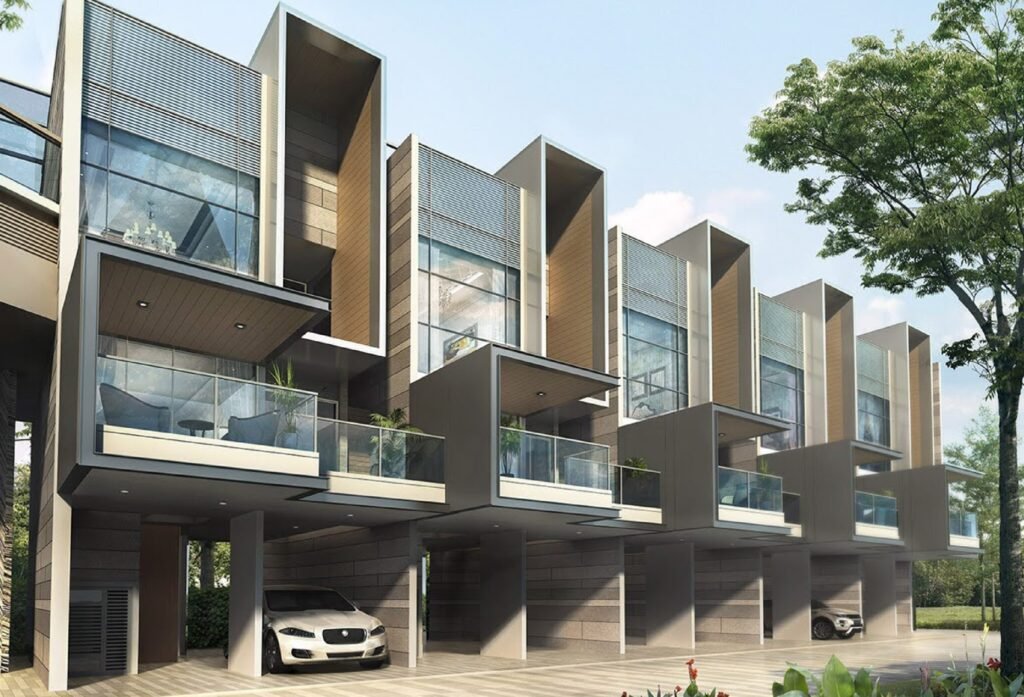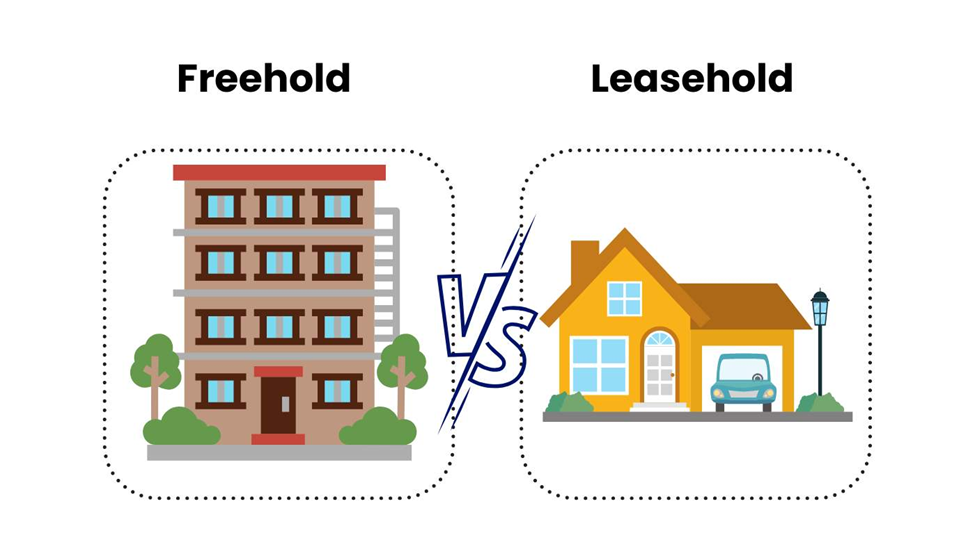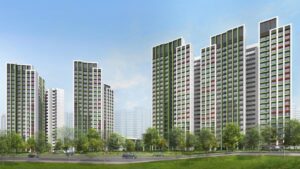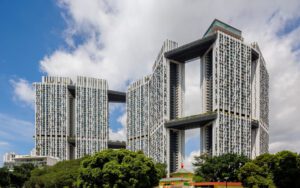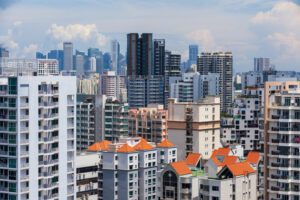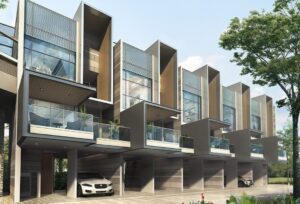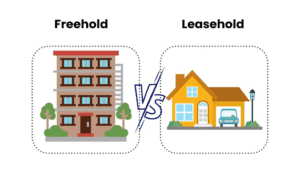A big source of myths and half-truths are the ones surrounding new launch properties. Almost everyone has a “theory” on how to find the best units and the best block; but most of the time, these tips are too generalised. In reality, condos in Singapore are quite diverse, and developers are constantly adapting to the market. This also means that the strategies for identifying the best blocks are not always apparent. Here are some of the cliche sayings to be wary of:
Myth 1: You should focus on finding blocks with the “best view”
The first thing I would point out is that, in the past one or two decades, developers have greatly improved the quality of the view. Costa Del Sol, for instance, was built such that every block has an unimpeded sea view; and virtually every block at Skywoods has a comparable view of the nearby greenery.


This isn’t to say we can assume every block of every condo has a good view; just that for condos built from 2000, you’re less likely to stumble upon a block where the views are significantly worse than another (it happens from time to time, but it’s uncommon). Rolex replica watches
The other thing I would point out is that “the best view” does not always mean the best value. For example: if you tend to keep the curtains drawn most of the time, is it really worth paying the premium for an “unblocked view”? The money you save could go toward other things, such as paying for renovations, or perhaps getting a bigger unit.
And if you’re an investor aiming to rent out the unit, can you be sure a tenant will pay a lot more rent just because the view is better? Not every tenant cares. You could end up paying a higher quantum, but still getting the same rental rate as a block with a worse view. This just translates to a worse yield for you in the long run.
A good view is always nice, but it’s not the be-all and end-all.
Myth 2: The block that is furthest from the facilities is not good
This depends on the site layout, and the proximity of the facilities to the nearest blocks. In general, being too close to the facilities is also not good. Areas like the pool, BBQ pits, and clubhouse can be noisy, especially on the weekends or during festive seasons. If you have a lower floor unit near the main facilities, this can be quite intrusive.
Here are 2 good examples.
Eight Riversuites
Eight Riversuites has a site area of about 18,618 sqm or equivalent to three and a half football fields. The project is sandwiched between two major roads – Serangoon Road and Bendemeer Road, and bound by Whampoa East and Bendemeer Primary School. Within this confined space, there are 4 high rise towers of 28 & 29 storeys – Blocks 2, 6, 8, and 10, as well as some strata houses. Notice that all the facilities are closely packed between the high rise blocks, or at the periphery. For Block 2, stacks 1, 2, 7 and 8, you can imagine the amount of noise generated when there are many children playing in the pool which is just in front of the block.
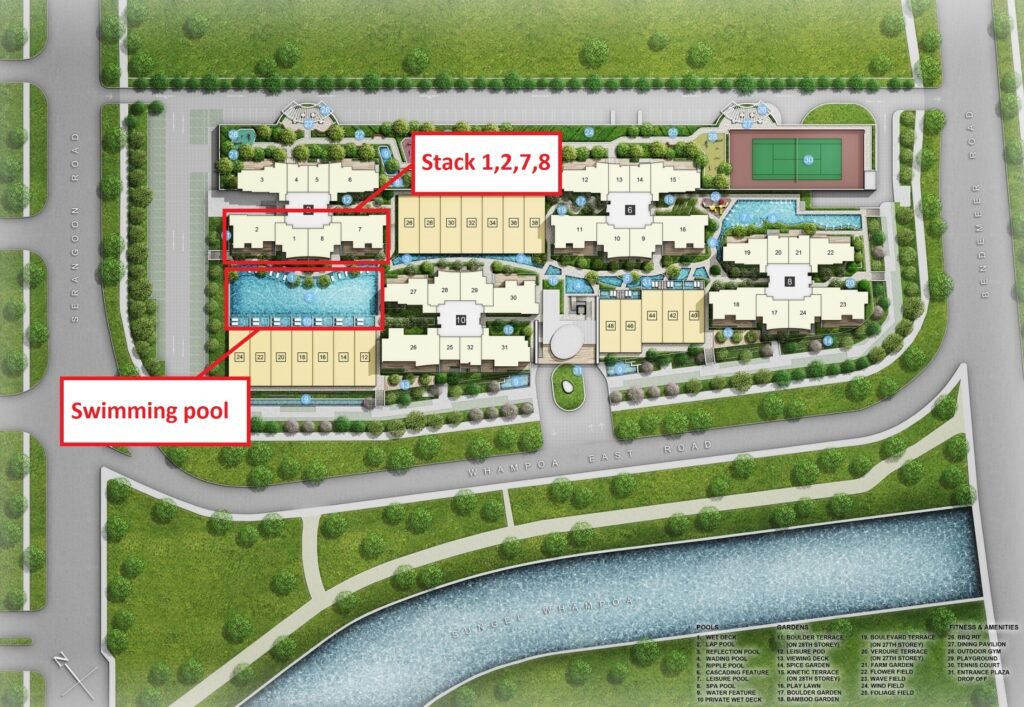
Parc Clematis
Parc Clematis just obtained TOP in 2023. Notice there is a huge pool (beach pool) in the middle of the project, denoted by #52 on the site plan. Surrounding this main pool are dining pavilions, jacuzzis, pool decks and cabanas. Needless to say, the lower floor stacks facing the main pool may experience a fair amount of noise coming from human activities especially during weekends.

Another factor that’s often ignored is access to side gates. Sometimes, a block may be further from the main facilities, but closer to the side-gate which leads to the MRT station, bus station, etc. You may consider that this is a greater convenience than being closer to the pool, gym, etc., especially if you’re going to use the side gate every day.
Take a closer look at Treasure at Tampines. At 2,203 units, it is the largest private residential development in Singapore. Block 15 is located at the far corner of the project, far away from the Clubhouse and most of the other facilities. However, it is just beside the side gate (#5) which is within a 6-minute walk to Simei MRT. In fact, Block 15 is the closest to an MRT station. So if you value accessibility for daily commuting, you might just choose block 15 even if it is far from other facilities.
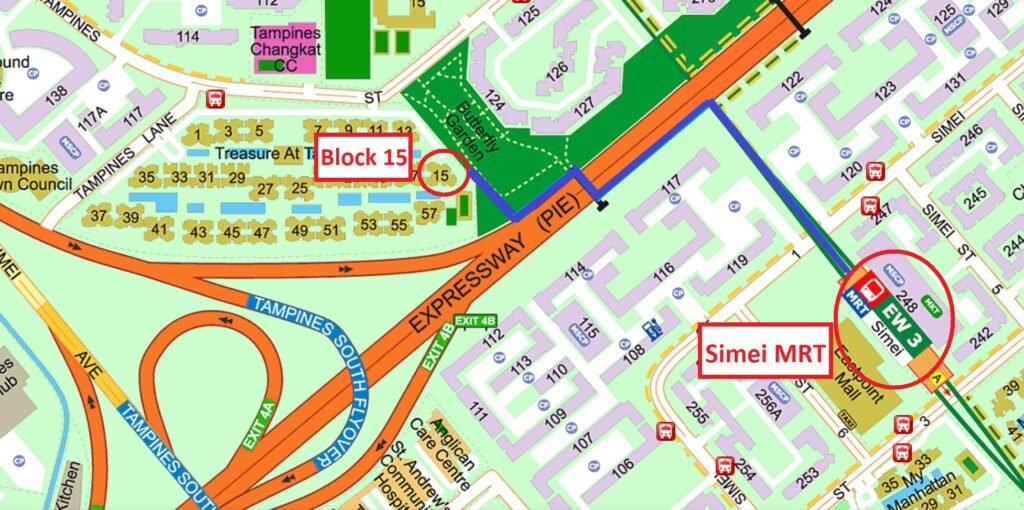
Myth 3: You can identify the best block from just the site plan / Google Earth / Google Street View, etc.
You need to look beyond the present when deciding on the block. A key tool that I use for this is the URA Master Plan: you need to check if any other residential zones are nearby, and the Gross Plot Ratio (GPR) for these areas.
The GPR affects the potential height of future residential projects – so a low GPR of 1.4 means a maximum of four storeys, while high GPR of 2.8 means a potential height of 36 storeys.
There’s a possibility that, if your condo unit is facing a residential plot with a high GPR, you will end up with a blocked view a few years from now.
(An extra tip for readers: if you see that a block has a very good view, but doesn’t seem to have a premium price, it may be facing a high-density zone that’s not yet developed. Always check for future developments near the condo, before you buy)
Look at this example.

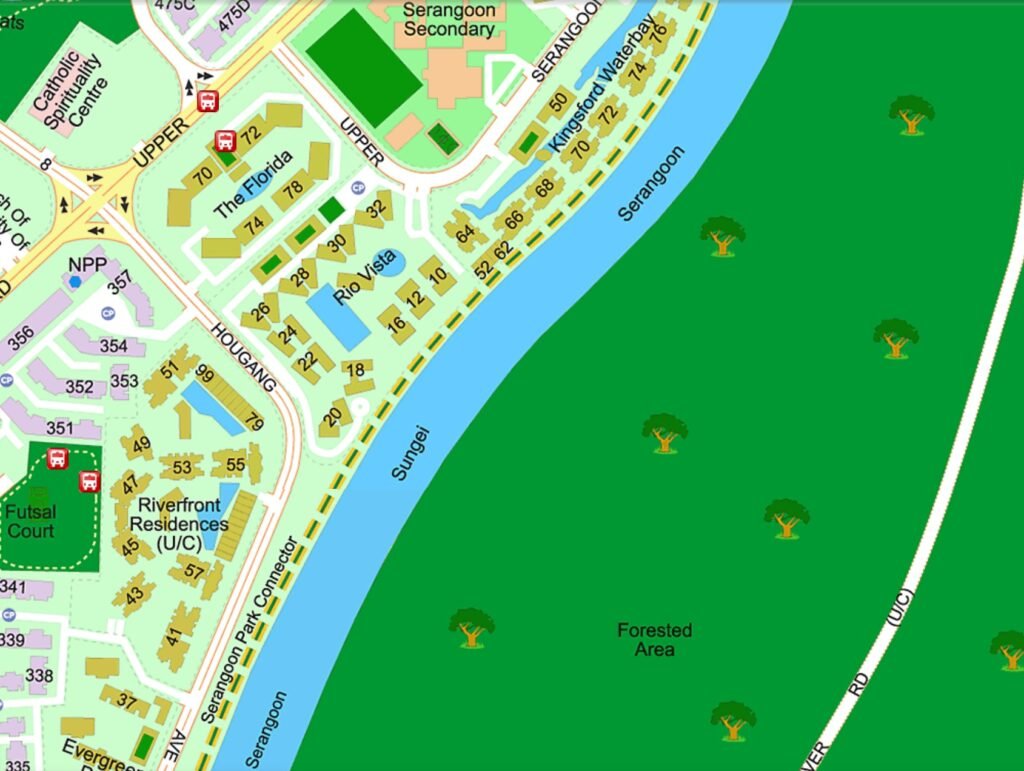
Located next to the Sungei Serangoon River, river facing stacks enjoy a view of lush rolling greenery that stretches as far as the eyes can see. Across the river, it is a forested area. However, a quick check on the URA Master Plan reveals that the land is zoned for industrial use with a plot ratio of 2.5. It is reasonable to conclude that once the Paya Lebar Airbase moves away from 2030, the entire area may be transformed into a mix of residential, commercial and industrial use. The fantastic views Rio Vista enjoys today may only last for another decade.
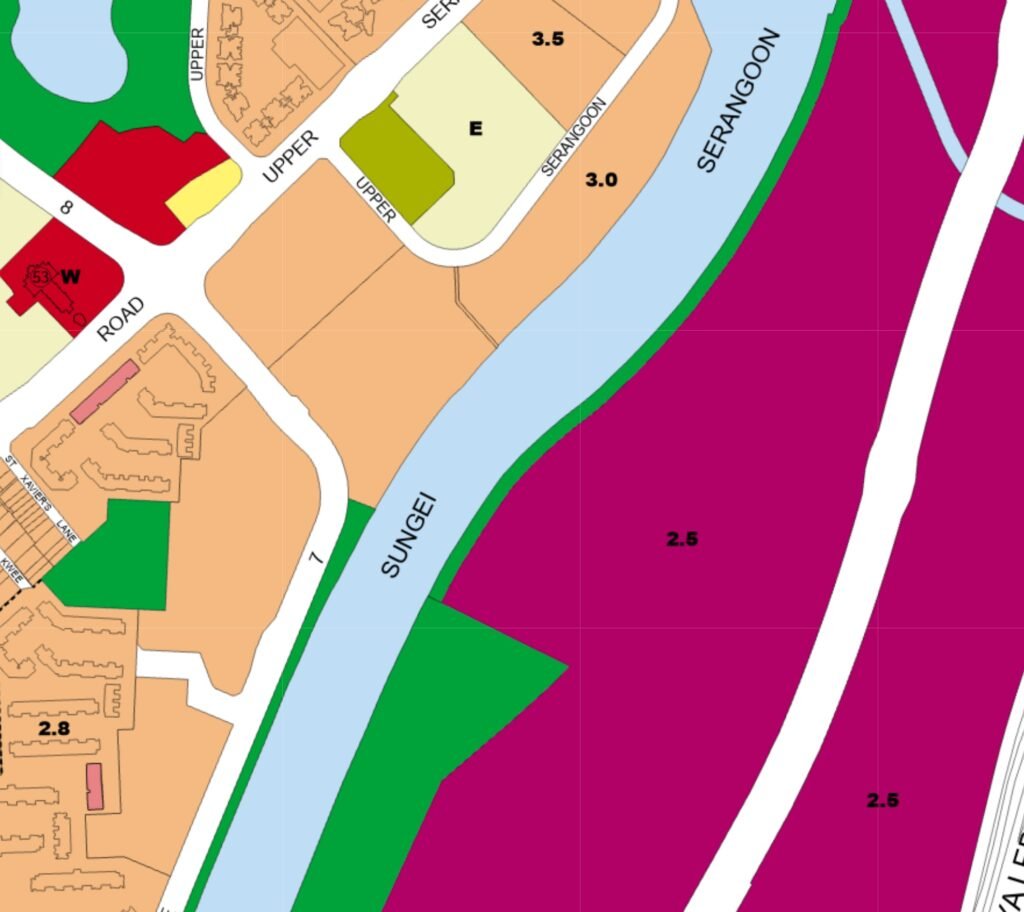
Myth 4: North-South facing blocks are the best
It’s true that North-South facing blocks, and hence their units, are less prone to glare and heat from the sun. However, there are many other factors involved. For example, big picture-windows in the living room, or large balconies can also affect the amount of sun you’re getting – often more than the facing of the unit.
There’s also the role of personal preference: some buyers prefer south-east facing blocks, for example, as this catches the morning sun but not the hotter afternoon sun. This can be a pleasant way to wake up.
There are also home buyers who want strong sun, such as those who prefer a lot of natural light, or who have small gardens in the form of planter boxes, balcony gardens, etc.
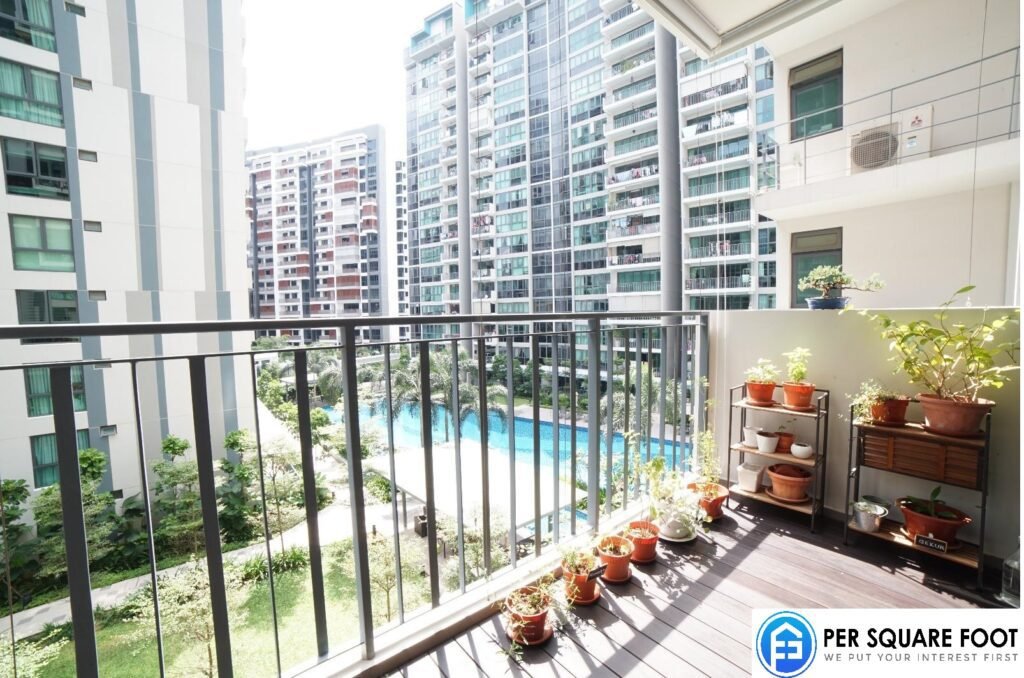
Myth 5: The blocks closest to the train tracks or roads are always the worst
Noise pollution is more a matter of height.
Consider, for example, a lower floor unit in a block that’s far from the road, but closer to the pool. Such a unit may be noisier than a higher floor unit, in a block directly facing an MRT track.
This is because noise pollution from the crowded pool area will carry over, whereas the higher floor unit isn’t bothered by the train noises.
Developers also tend to make provisions when the block is going to be near a road, such as planting more foliage to absorb the noise. A recent new launch (The Continuum) has Thiam Siew Avenue running right down the middle of the condo. However, the foliage and other features along this avenue prevent any serious noise pollution.
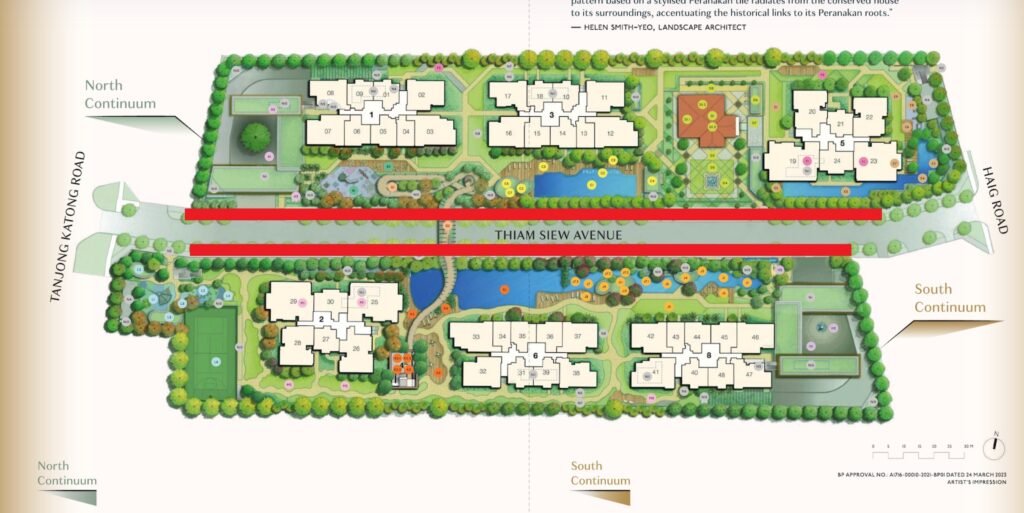
Another new launch that’s near a major road, Terra Hill, is sited on elevated land: the developer paid significantly more to raise the condo above the nearby road, to insulate the development from road noise.
(Sadly it also “elevated” the eventual price above some earlier estimates by analysts, but that’s another story).
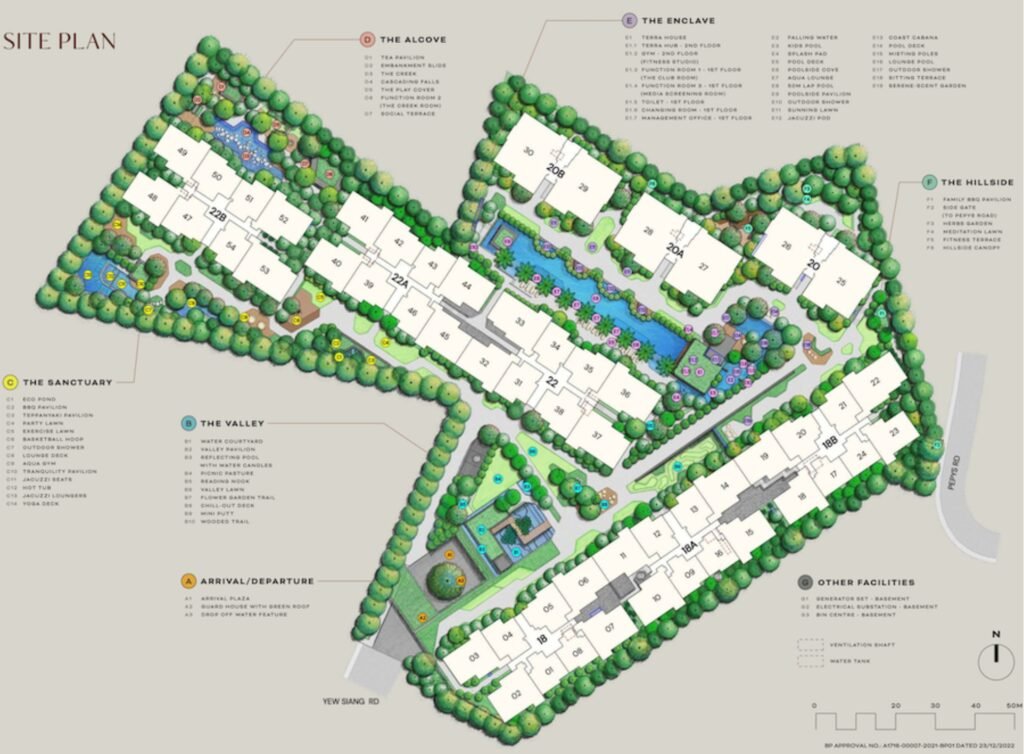
So for newer projects, being closer to a road or train track may be less of an issue, as developers have found ways to compensate for the noise. For example, if a new project has units facing the expressways, the developer may provide double-glazed windows for better sound-proofing, or even provide a ziptrack in the balcony for free.
For older projects, I would still stay away from blocks closer to the road; or I’d prepare to pay for a higher floor, if that’s my only choice.
Myth 6: Premium blocks will fetch better resale value
Some developers will tell you outright, at a show flat, which blocks are considered premium. Usually these are the blocks with larger units, or which have additional features like private lifts. They may also be the higher towers, or have better views (but this is not always the case).
But it’s risky to assume that, because you buy a unit in a premium block, a future buyer will respect the difference. In reality, the link between a premium block / unit, and its future resale value, is theoretical – there’s no guarantee that a higher quantum now means better resale prices later.
It’s better to think of premium blocks from a pure owner-occupier perspective. Think of it as a consumerist move, where you are paying more to enjoy better finishings in the unit, the private lift, the better view, etc. But don’t assume that all this will lead to huge gains in the resale market.
Myth 7: Blocks closer to the main entrance are more convenient
Admittedly, this is a shorter distance to drive out from the car park, or to walk out. However, this can also become a disadvantage, especially for site layouts with only a single point of entry and exit.
Blocks closest to the entrance are almost always noisier: you’re more likely to hear cars honking during the day, or children yelling as they get on or off the school bus. This might drive you to purchase a higher floor unit in the block, which often means paying a premium.
As you can see, it’s difficult to generalise which is the best block. The “rules of thumb” are broken quite often: developers are constantly innovating with new construction materials and architecture, and personal preferences and goals play a large part. The “best block” may also be the best for home owners but not necessarily investors, or vice versa.


